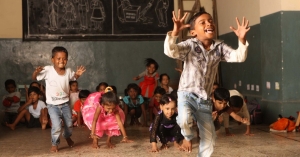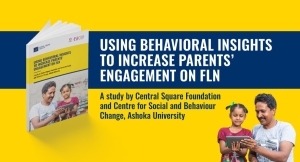All parents want for their children to have a better life than what they themselves had. And for a majority in India, the pathway to that life is through education. This is why even those with limited means go to great lengths to put their children in school. Today, close to 97% children in the 6- to 14-year age group are enrolled in schools across the country. Unfortunately, most schools are failing these children. The Annual Status of Education Report (ASER) 2018 is the latest study to highlight how most children are not learning enough in spite of going to school. More worryingly, the fault line seems to appear as early as classes 1, 2 and 3, with over 70% unable to even read, write or do simple mathematics at the level expected of them. If children do not learn even these basic skills, how can they be expected to keep up in later classes, never mind attain higher education or find meaningful employment? It is hard to climb a ladder if the very first rung is broken.
To be able to read with meaning and do basic arithmetic are gateway skills that equip children to learn better in later grades, by when all subjects require students to ‘read to learn’ – even a mathematics problem is first and foremost a language problem. So, if children do not learn to read with understanding by class 3, they obviously find it difficult to keep up when language and mathematical concepts become more abstract and complex. Unfortunately, this means that a child could potentially reach class 8 – which marks the end of compulsory schooling in India – as a 14-year-old struggling with even basic literacy and numeracy. While this is not to say later development isn’t possible, remediation efforts come at a high cost and are known to be less effective – usually by then, a student lacks both the interest and ability to consume these programs. Many children even drop out of the school system altogether. Meanwhile, parents are unable to see any real benefits of their child’s education in daily life, be it in their ability to read hoardings and posters or calculate the costs of buying vegetables, and thus see no reason to keep them in school.
To be able to ‘read to learn’, children must first ‘learn to read’…
It is easy to place the blame for children’s failure to learn on teachers, who form the most visible and accessible link of the education system. However, most teachers lack the requisite training and support, and sometimes even the motivation, to be able to teach young students effectively. Teaching a child to read requires specialized skills because unlike learning to speak, learning to read does not come naturally – many dialects and regional languages do not even have a script. Research recommends a more balanced approach to literacy, which combines instruction in phonics with word study and comprehension. However, like most of our education system, the teaching methodology followed in primary classes tends towards rote-learning and assumes that children must first memorize the script before they can make meaning. There is a dearth of timely, age-appropriate and contextualized resources to cater to children from different family and language backgrounds. To make matters worse, the curriculum followed is excessively demanding, designed for those at the top of the class rather than the average child. This forces teachers to ignore those students who struggle to keep pace in order to finish the overambitious curriculum.
While children who are part of the elite can compensate for any deficiencies in teaching with support at home, the majority of children in the public school system unfortunately do not have this option. Many of them are first-generation learners from disadvantaged backgrounds, whose parents are unable to provide time or resources. In fact, a child’s socio-economic background leads to differences in learning even before they have entered school. A 1995 longitudinal study in the US found that by the age of 3, children with college-educated parents had vocabularies 2 to 3 times larger than those whose parents had not completed high school. India lacks a high-quality universal preschool program that could offset this gap by building cognitive, pre-literacy and pre-numeracy skills in 4-to-6-year-olds and preparing them to be more ‘school ready’. This is also the age when maximum learning takes place, with recent research from neuroscience indicating that the brain’s neural malleability and plasticity is at its highest until around the age of 7. Losing out on these early years of a child’s development is a missed opportunity.
For education to be a true leveller, it is important for us to go back to the basics. We need to set up our children to learn by giving them the foundational literacy and numeracy skills they require for all future learning. It is not an easy problem with a quick solution, but it is possible – as examples from around the world, including Kenya, Brazil and Vietnam, have shown. Classroom and pedagogy based solutions need to go hand-in-hand with systemic reforms that provide structural support and state-owned accountability, in order to achieve sustainable impact and effectively improve learning in the early years. The entire education system must converge on this goal, with all policies and programs aimed at achieving at least a minimum proficiency level in reading and mathematics for all by the end of primary school. For most children, it is their only chance to lift themselves out of the circumstances they were born into and had no part in choosing, and progress to a better life.



